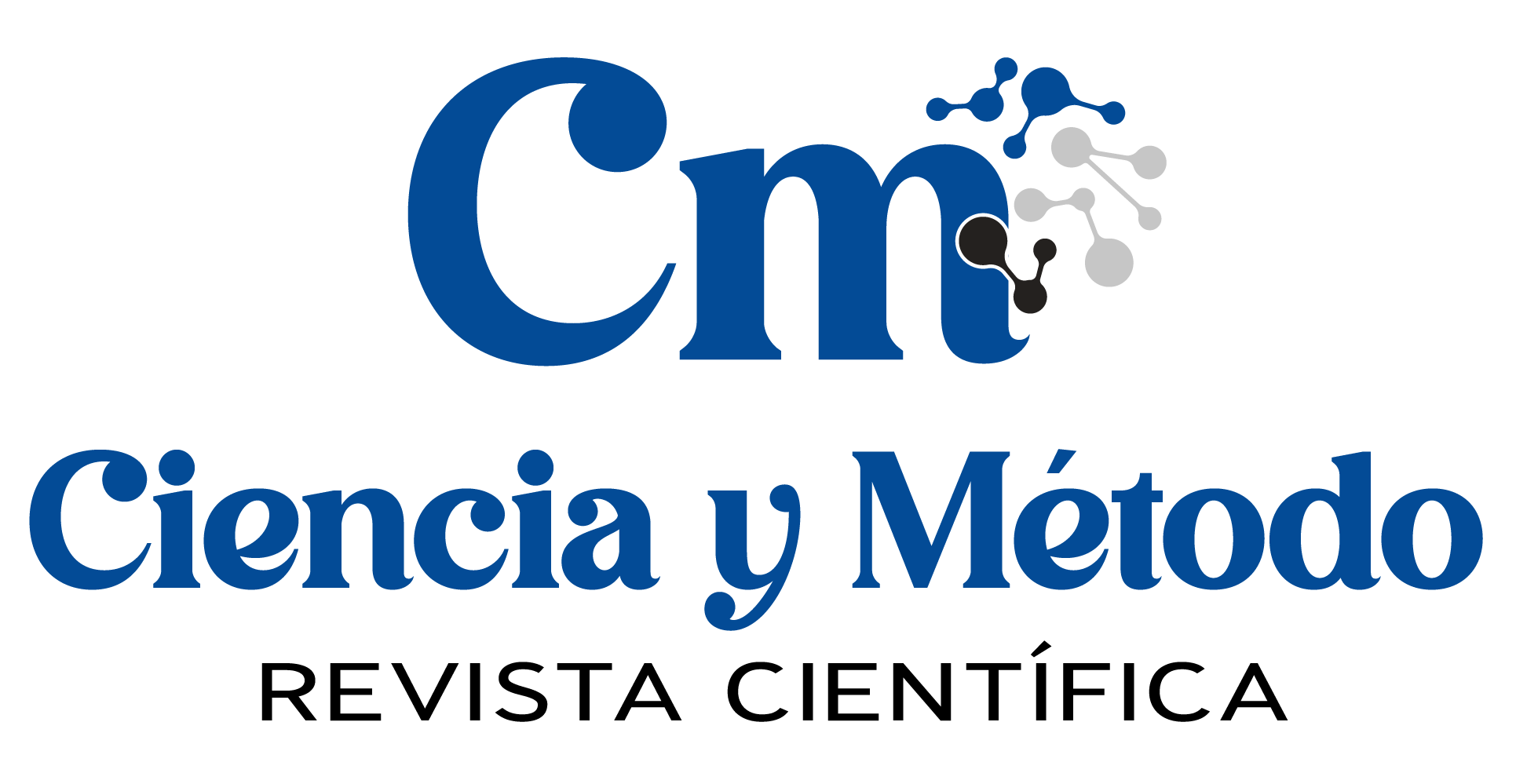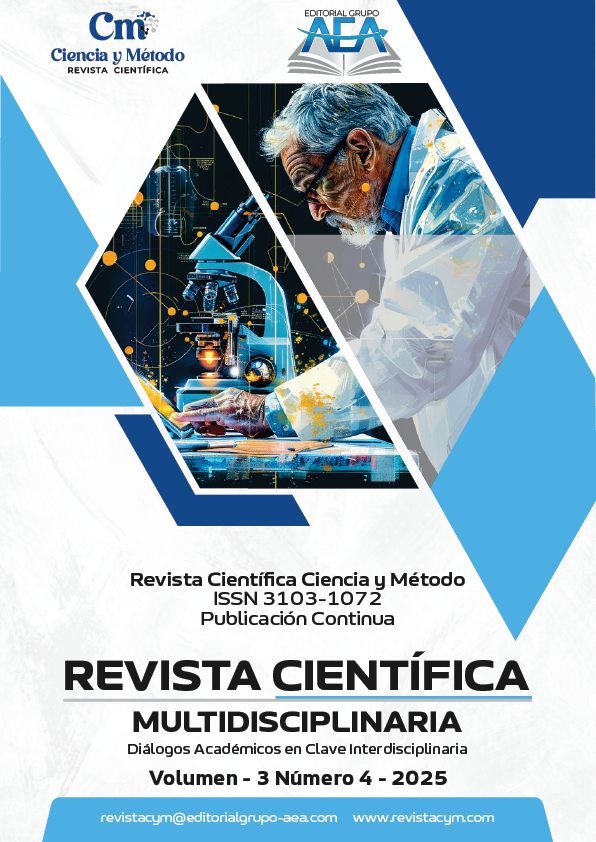The impact of Universal Design for Learning on the implementation of active methodologies with technological support
Main Article Content
Abstract
Within the framework of inclusive education, this article examines the impact of Universal Design for Learning on the implementation of active methodologies supported by digital technologies, with the aim of clarifying the benefits, limitations, and conditions of application. An exploratory and systematic review of the literature was conducted in academic databases such as Scopus, Web of Science, ERIC, and ScienceDirect (2010–2025), using a three-phase selection process and qualitative interpretation based on constant comparison of empirical studies, reviews, and applied cases. The findings show improvements in participation, access to content, persistence, and performance when digital resources integrate accessibility and flexibility criteria; however, the results are heterogeneous and depend on educational contexts and fidelity in implementation. The study focused on describing the applications, benefits, and limitations of universal design in scenarios with active methodologies and technology, as well as identifying the contextual conditions that favor its success. Even so, barriers persist, associated with insufficient teacher training, limited technological infrastructure, lack of accessibility in some virtual environments, and a scarcity of longitudinal evaluations. It concludes that the integration of UDL is promising but requires institutional policies, ongoing training, and technological investment to consolidate its effectiveness.
Downloads
Article Details
Section

This work is licensed under a Creative Commons Attribution-NonCommercial 4.0 International License.
How to Cite
References
Almeqdad, Q. I., Alodat, A. M., Alquraan, M. F., Mohaidat, M. A., & Al-Makhzoomy, A. K. (2023). The effectiveness of universal design for learning: A systematic review of the literature and meta-analysis. Cogent Education, 10(1), 2218191. https://doi.org/10.1080/2331186X.2023.2218191 DOI: https://doi.org/10.1080/2331186X.2023.2218191
Ayala-Chavez, N. E., Lino-Garces, C. J., Zambrano-Zambrano, F. M. A. y Gonzalez-Segovia, L. A. (2025). Percepciones estudiantiles sobre la educación virtual implementada en el nivel secundario. Revista Científica Ciencia y Método, 3(2), 88-101. https://doi.org/10.55813/gaea/rcym/v3/n2/57 DOI: https://doi.org/10.55813/gaea/rcym/v3/n2/57
Boysen, G. A. (2024). A critical analysis of the research evidence behind CAST’s universal design for learning guidelines. Policy Futures in Education, 22(4). https://doi.org/10.1177/14782103241255428 DOI: https://doi.org/10.1177/14782103241255428
CAST. (s.f.). Universal Design for Learning Guidelines. Recuperado de https://udlguidelines.cast.org/
Concha-Ramirez, J. A., Saavedra-Calberto, I. M., Ordoñez-Loor, I. I., & Alcivar-Córdova, D. M. (2023). Impacto de la gamificación en la motivación y el compromiso estudiantil en educación primaria. Revista Científica Ciencia Y Método, 1(4), 44-55. https://doi.org/10.55813/gaea/rcym/v1/n4/22 DOI: https://doi.org/10.55813/gaea/rcym/v1/n4/22
Davies, P. L., Schelly, C. L., & Spooner, C. L. (2013). Measuring the effectiveness of Universal Design for Learning intervention in postsecondary education. Journal of Postsecondary Education and Disability, 26(3), 195 220.
de la Fuente González, S., Menéndez Álvarez-Hevia, D., & Rodríguez-Martín, A. (2025). Diseño Universal para el Aprendizaje. Una revisión sistemática de su papel en la formación docente. Alteridad, 20(1), 113 128. https://doi.org/10.17163/alt.v20n1.2025.09 DOI: https://doi.org/10.17163/alt.v20n1.2025.09
Fuentes-Riquero, S. Y. (2025). Estrategias de aprendizaje autónomo a través de las TIC en estudios sociales: Un enfoque para mejorar la autoeficacia y el rendimiento académico. Revista Científica Zambos, 4(1), 74-86. https://doi.org/10.69484/rcz/v4/n1/77 DOI: https://doi.org/10.69484/rcz/v4/n1/77
González, D., & Rueda, P. (2020). Diseño Universal para el Aprendizaje: estrategias de aplicación en la educación básica. Revista Colombiana de Educación, (79), 109–134. DOI: https://doi.org/10.56219/rgp.vi40.912
Montes, R., Herrera, L., & Crisol, E. (2024). Moodle usability assessment methodology using the Universal Design for Learning perspective. https://doi.org/10.48550/arXiv.2403.10484
Moreira-Alcivar, E. F. (2025). Desarrollo de un modelo de aprendizaje colaborativo para la enseñanza de la historia en Ecuador. Revista Científica Zambos, 4(1), 87-100. https://doi.org/10.69484/rcz/v4/n1/78 DOI: https://doi.org/10.69484/rcz/v4/n1/78
Morettini, B. W. (2025). The professor of the future: Perspectives on UDL implementation in arts and sciences. Teaching Innovations & Applications.
Puyol-Cortez, J. L., Piedra-Castro, W. I., Saavedra-Calberto, I. M., Mendoza-Cusme, M. P., & Centeno-Bone, C. V. (2023). Evaluación del impacto de la educación emocional en el rendimiento académico en adolescentes. Revista Científica Ciencia Y Método, 1(1), 42-54. https://doi.org/10.55813/gaea/rcym/v1/n1/9 DOI: https://doi.org/10.55813/gaea/rcym/v1/n1/9
Sánchez Serrano, J. M. (2022). Eficacia de la formación docente en diseño universal para el aprendizaje: Una revisión sistemática de literatura (2000 2020). Journal of Neuroeducation, 3(1), 17 33. https://doi.org/10.1344/joned.v3i1.39657 DOI: https://doi.org/10.1344/joned.v3i1.39657
Scott, L. A. (2018). Barriers with implementing a Universal Design for Learning framework. Inclusion Research & Practice, 6(4), 274 286. DOI: https://doi.org/10.1352/2326-6988-6.4.274
Seok, S., DaCosta, B., & Hodges, R. (2018). A systematic review of empirically based Universal Design for Learning: implementation and effectiveness of universal design in education for students with and without disabilities at the postsecondary level. Open Journal of Social Sciences, 6, 171 189. https://doi.org/10.4236/jss.2018.65014 DOI: https://doi.org/10.4236/jss.2018.65014
Tamayo-Verdezoto, J. J. (2025). Los rezagos de la educación tradicional en los momentos actuales en el Ecuador: Una educación carcelaria dentro de las instituciones educativas. Journal of Economic and Social Science Research, 5(1), 131–145. https://doi.org/10.55813/gaea/jessr/v5/n1/165 DOI: https://doi.org/10.55813/gaea/jessr/v5/n1/165
Veytia Bucheli, M.G., Gómez-Galán, J., Cáceres Mesa, M.L. et al. Digital technologies as enablers of universal design for learning: higher education students' perceptions in the context of SDG4. Discov Sustain 5, 473 (2024). https://doi.org/10.1007/s43621-024-00699-0 DOI: https://doi.org/10.1007/s43621-024-00699-0
Vimos-Buenaño, K. E., Viteri-Ojeda, J. C., Naranjo-Sánchez, M. J., & Novillo-Heredia, K. H. (2024). Uso de la inteligencia artificial en los procesos de investigación científica, por parte de los docentes universitarios. Journal of Economic and Social Science Research, 4(4), 215–236. https://doi.org/10.55813/gaea/jessr/v4/n4/143 DOI: https://doi.org/10.55813/gaea/jessr/v4/n4/143





